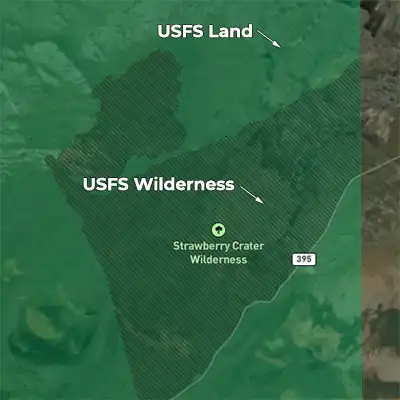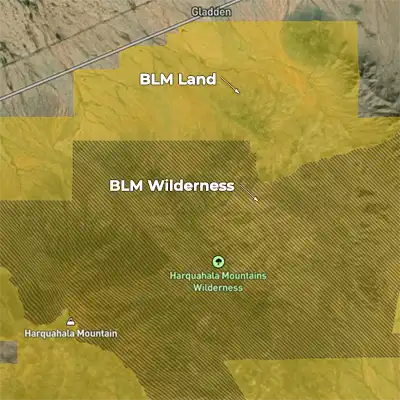Yes, you can camp in a wilderness area, however you have to hike your camping gear in because vehicles are not allowed, including bicycles. Wilderness areas were created by the federal government to preserve habitats and ecosystems in a natural state free of human intervention. There are no roads, no buildings, and no man-made infrastructure of any kind.


All wilderness lands are identified as shaded areas on Boondocker’s Bible maps
Can You Camp in a Wilderness Area?
Yes, you can camp in a wilderness area. You just have to do it by foot. No vehicles are allowed in wilderness areas, including bicycles…
Wilderness areas are defined in the Wilderness Act of 1964 as…
A wilderness, in contrast with those areas where man and his works dominate the landscape, is hereby recognized as an area where the earth and its community of life are untrammeled by man, where man himself is a visitor who does not remain.
Read the full Wilderness Act of 1964
Who Manages Wilderness Areas?
The US federal government manages all wilderness areas. It requires an act of Congress to declare a portion of land as “wilderness”. Generally, any citizen or organization can lobby their Congressperson to convert existing federally-owned land into wilderness.
Most wilderness areas are managed by the Bureau of Land Management (BLM) and the U.S. Forest Service (USFS). But the National Park Service (NPS) and the U.S. Fish & Wildlife Service (USFWS) also manage wilderness areas.
Are Any Vehicles Allowed into Wilderness Areas?
No, vehicles are not allowed, not even human-powered vehicles like bicycles, kayaks, nor even horse-drawn carts. You can’t even push a wheelbarrow on wilderness areas. All transportation must be accomplished by foot, horse, or pack animal.
The only exception is wheelchairs for use by persons with physical disabilities.
What if I Accidentally Drive Into a Wilderness Area?
It’s not possible to accidentally drive into wilderness because there are no roads. The only way you could do is if you’re driving off-road.
However, there are some wilderness areas where a road splits through the middle, but in these cases the road itself, plus about 50 feet on either side, is carved out of the wilderness. As long you don’t drive beyond 50 feet from the side of a road, you won’t accidentally drive into wilderness.
What About Electronics or Mechanical Devices?
Each federal agency creates its own regulations defining what uses are permitted or not permitted, thus rules will be different from BLM-managed wilderness versus USFS-managed wilderness, and so on. But generally speaking…
- Any motorized equipment, machinery, appliances, or vehicles are banned.
- However, any motorized equipment, machinery, appliances, or vehicles that is necessary for persons with physical disabilities is allowed.
- Personal electronic devices, that can be carried by a single person, are allowed, such as cellphones, GPS devices, two-way radios, flashlight, small charging equipment, even laptop computers.
- Larger electronic or electrical appliances, typically those that have to be plugged into a generator, are banned, such as microwave oven, desktop computer and monitor, coffee maker, power tools.
- All aircraft is banned, including drones, hang gliders, or ultralights.
Are Permits Required to Camp in Wilderness Areas?
Sometimes. The BLM, USFS, NPS, and USFWS, will adopt its own rules for wilderness areas, and will require permits for certain areas. The only way to know which wilderness require permits and which don’t is to contact the administrative body in charge.
Both the USFS and NPS do a consistent job of identifying permit-required wilderness on their websites. The BLM is not so much so, as is the USFWS.
Wilderness.net has extensive information about camping in each wilderness area.
What About Wilderness Study Areas?
A Wilderness Study Area (WSA) is a unique designation used by the BLM to identify lands that might some day become wilderness. WSA lands do not have the same protections as wilderness, and are not subject to the Wilderness Act of 1964. (See “Wilderness and Wilderness Study Areas” published by the BLM)
Most WSA lands do not have existing roads, buildings, or other man-made improvements, thus it’s difficult for vehicle-based campers to use these lands. But, camping is still allowed on WSA lands, as is hunting, hiking, and other activities.

